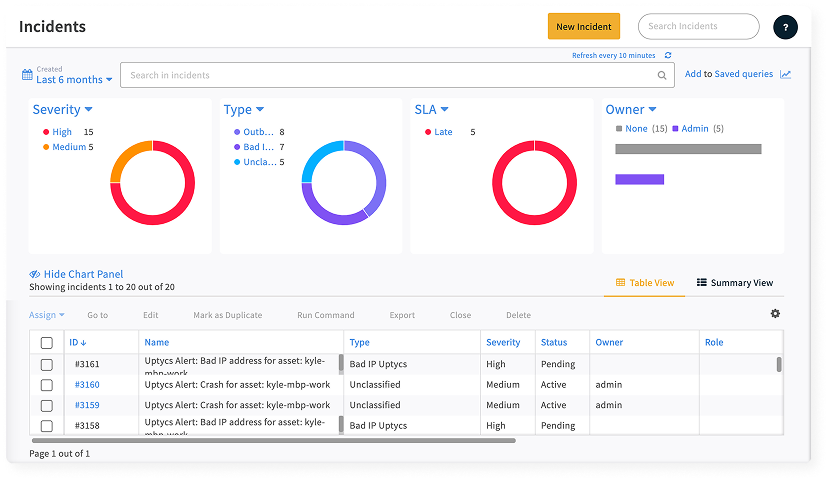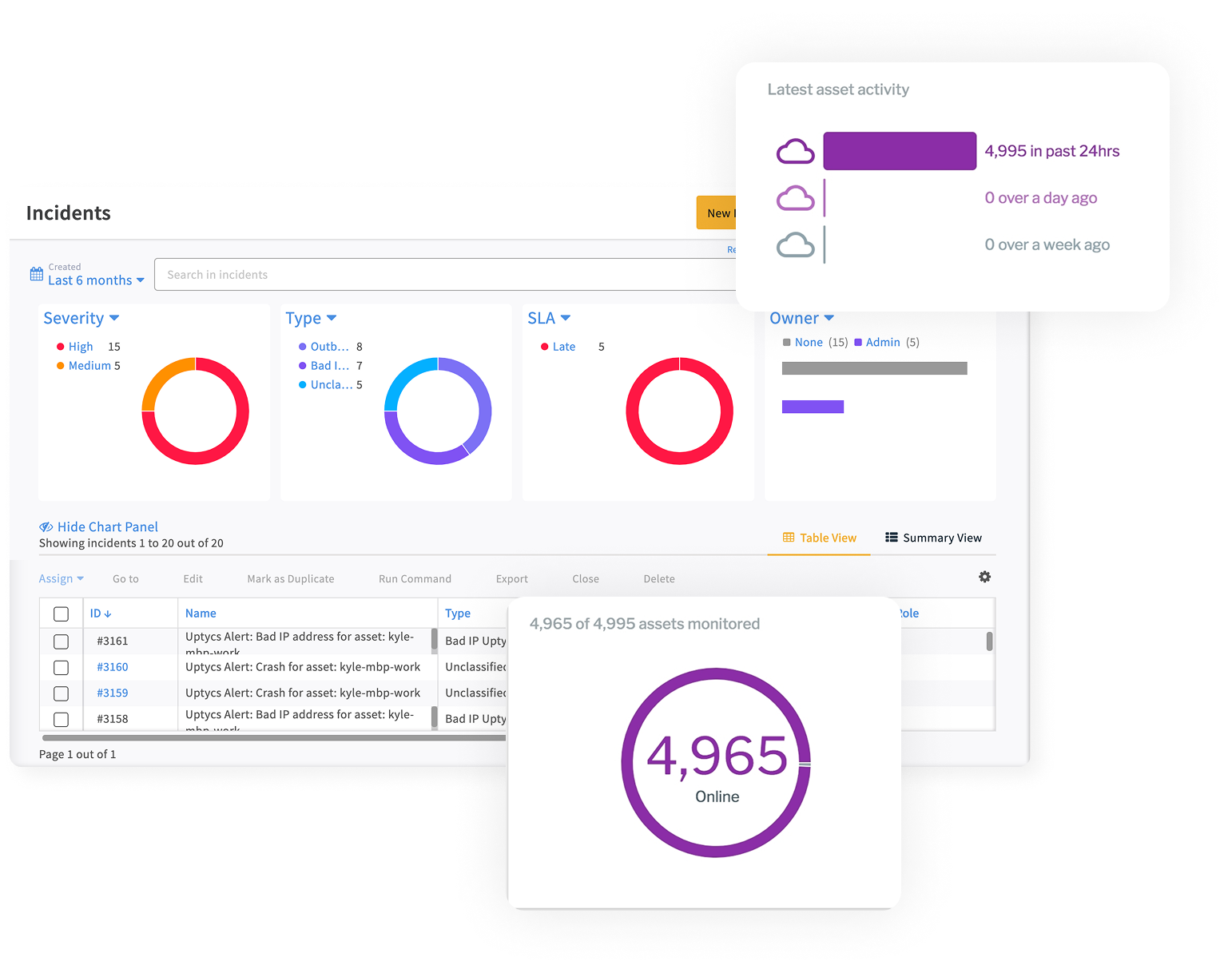Purpose-built for Hybrid Cloud Security
security coverage and flexibility.
Lower Total Cost of Ownership
Unlike Aqua, which generates excessive alerts requiring manual investigation, we provide streamlined, high-fidelity insights—reducing both security costs and operational burden.
24/7 Managed Detection & Response (MDR)
Aqua lacks a dedicated MDR team, leaving you to manage threats alone. We provide expert-driven monitoring and response, ensuring real-time protection without extra workload on your team.
Risk-Based Prioritization
Aqua floods teams with unfiltered vulnerability alerts. We cut through the noise by prioritizing real risks—focusing on what’s actively running in CPU and memory, not just what’s on disk.
"Uptycs supports extensive historical investigations with the ability to query data for up to 13 months, providing deep forensic insights and long-term security visibility."
Shift up your AWS security
When assessing your hybrid cloud security tools, it’s critical to find the right solution to protect workloads. Here at Uptycs, many of our customers come to us having already experimented with Aqua. They quickly find out why we are one of the leading Aqua competitors. Our CNAPP solution delivers unmatched scalability, proactive threat detection, and deep forensic insights.

Trusted by

Uptycs vs. Aqua
Explore how Uptycs outperforms Aqua in key areas such as data retention, real-time threat detection, and comprehensive visibility across your cloud infrastructure.
Identity-Based Security
Provides comprehensive Cloud Infrastructure Entitlement Management (CIEM), ensuring least-privilege access, automated identity risk analysis, and proactive remediation to reduce insider threats and privilege misuse.
Lacks native CIEM capabilities, leaving security teams blind to excessive permissions and identity risks across cloud environments. No built-in identity risk prioritization means increased exposure to privilege escalation attacks.
Deep Data
Insights
Purpose-built CNAPP security provides a universal data model and rich UI for deep data context, risk detection, correlation, and prioritization, accelerating risk mitigation and simplifying SecOps.
Relies on disparate tools (acquired and open-source), hindering SecOps with a fragmented user experience due to disjointed integrations and data models.
Broad Security Coverage
Secures any hybrid cloud workload with sensor or agentless deployment, offering visibility, scanning, real-time protection, and fleet-level threat blocking with remediation capabilities.
While strong in container security, Aqua falls short in securing broader attack surfaces and cloud infrastructure, and struggles to scale with expanding deployments.
Customizable Threat Detection
Broad and customizable out-of-the-box coverage, including YARA-based behavioral detections and MITRE-mapped anomalies for fast analysis.
Lacks broader cloud context for correlation and utilizes prebuilt rules logic, making it challenging to create custom detections and potentially miss unique or advanced threats.
Comprehensive Risk Remediation
Correlates assets, activity, and risk across domains, prioritizing critical threats with runtime insights into identity, data, anomalies, and misconfigurations. Provides real-time remediation.
Provides static vulnerability management but lacks runtime context for prioritization. Offers limited posture management, no permissions management, and cannot correlate data for risk prioritization.
Deep Forensics
Correlates assets, activity, and risk across domains, prioritizing critical threats with runtime insights into identity, data, anomalies, and misconfigurations. Provides real-time remediation.
Provides static vulnerability management but lacks runtime context for prioritization. Offers limited posture management, no permissions management, and cannot correlate data for risk prioritization.





